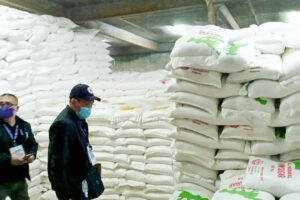By Adrian H. Halili, Reporter
SUGAR inventories are considered sufficient until the beginning of the milling season later this year, producers said, rejecting the need to import.
Confederation of Sugar Producers Associations, Inc. (CONFED) President Aurelio J. Valderrama, Jr. said that the current rates of withdrawal from reserves indicate that inventory levels are ample, and can hold out until milling starts.
“We reiterate that any sugar import plan should be data-based, calibrated, totally transparent and fair, done in consultation with the industry and therefore immune from speculation and manipulation,” he added.
Last week, Agriculture Secretary Francisco P. Tiu Laurel, Jr. said that the Department of Agriculture will clear imports of 200,000 metric tons (MT) of refined sugar to plug possible supply gaps during the milling offseason.
The national raw sugar inventory as of June 9 was up 29.3% during the 2023-2024 crop year to 436,229 MT, according to the Sugar Regulatory Administration (SRA).
Stocks of refined sugar, meanwhile, rose 14.1% to 492,985 MT during the current crop year.
Roehlano M. Briones, a senior research fellow with the Philippine Institute for Development Studies, said the planned imports are limited and would not bring down sugar prices during the milling offseason.
“Even with a bigger harvest, there may be strong demand. The problem is, the amount (for import) is limited to what will keep prices from rising, rather than (volumes sufficient to) bring sugar prices down,” Mr. Briones said via Viber.
Calixto V. Chikiamco, Foundation for Economic Freedom president, said that the government should let the private sector determine the demand and supply situation and “let them import to stabilize supply.”
The SRA’s Sugar Order No. 2 allowed buyers of domestically produced sugar to participate in the government’s import operation.
CONFED’s Mr. Valderrama said that the SRA has yet to announce the start of the milling season of the 2024-2025 crop year.
He added that no crop estimates have been released for the new crop year, which has been affected by El Niño.
Last year, the regulator had estimated a 10-15% decline in sugarcane production due to the effects of El Niño.
SRA Administrator Pablo Luis S. Azcona said at the time that El Niño has inflicted damage on sugarcane due to be harvested in October.
It added that parts of Batangas, Southern Negros, and Mindanao have reported extensive sugarcane damage due to dry conditions.
“CONFED is asking SRA to begin consulting with the industry to discuss sugar policy for Crop Year 2024-2025,” he said.
